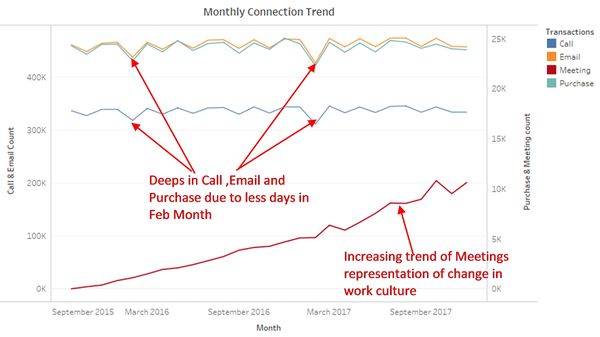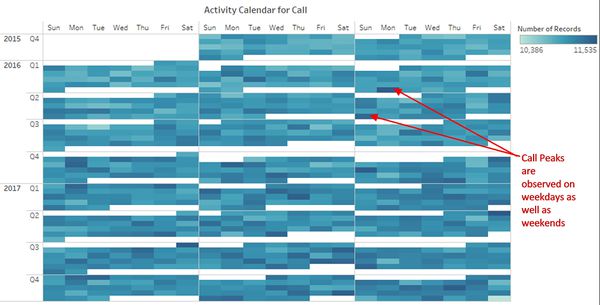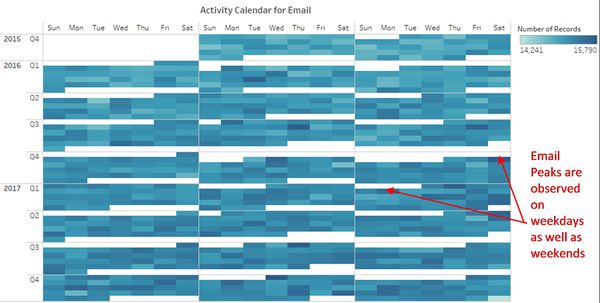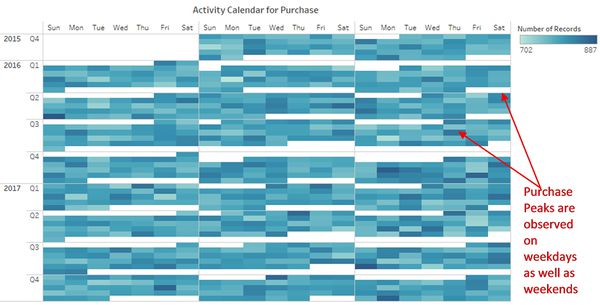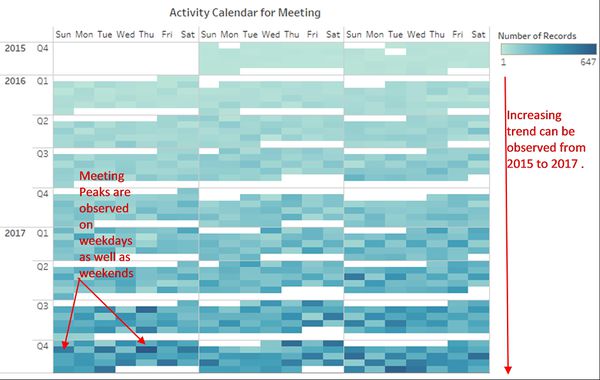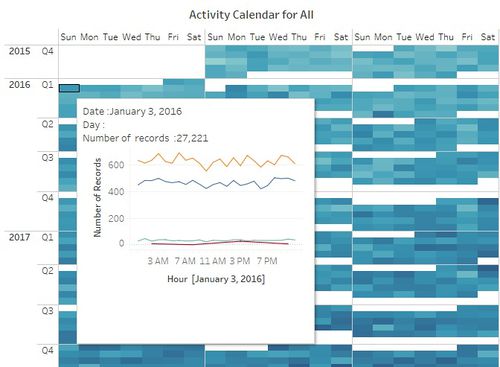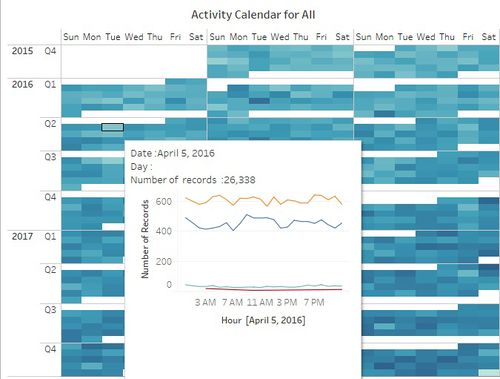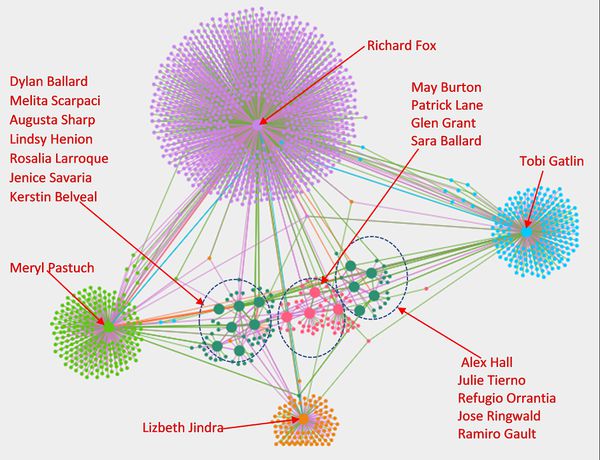Difference between revisions of "ISSS608 2017-18 T3 Assign Jyoti Bukkapatil Observations & Insights"
| Line 44: | Line 44: | ||
</div> | </div> | ||
| + | |||
=<big>'''Question 02'''</big>= | =<big>'''Question 02'''</big>= | ||
Revision as of 16:23, 8 July 2018
Contents
Question 01
Using the four large Kasios International data sets, combine the different sources to create a single picture of the company. Characterize changes in the company over time. According to the company’s communications and purchase habits, is the company growing? Limit your responses to 5 images and 500 words.
Analysis through visualization
Please note that data for Q3 Year 2015 was excluded to for better visualization of the trend.
- Time Series plot in figure 1 shows the monthly pattern for Calls, Emails, Purchases, and Meetings. The overall trend for Calls, Emails, and Purchases is stable throughout the past two years. This indicates that Kasios International is the stable company. There is neither a significant growth or decay.
- From figure 1 Call, Emails and Purchases are highly correlated and follow the same trend. Monthly Ups and down in calls, emails, and purchases follow the number of days in months. Deeps can be observed for months with 30 days and ups can be observed for months with 31 days. Similarly, two major deeps are for Feb 2016 and Feb 2017 respectively.
- The continuous increasing trend of Meetings might be due to a change in work culture or some new initiatives.
- Calendar view of daily calls (figure 2) shows that calls are randomly distributed throughout the week. There is no fixed pattern for the number of calls. There are peaks on weekdays as well as weekends. This might be because this is an international company and employees were working with people around the world from different time zones.
- Figure 3 & 4 shows Calendar plot for Email and Purchases. The daily pattern for a number of emails and Purchases is randomly distributed throughout the week which is the same as calls pattern.
- Calender plot for a daily pattern of the number of meetings is shown in Figure 5. The number of meetings has increased towards the end of 2017 Dec. Surprisingly the number of meetings also are randomly distributed throughout the week. In a month there is no fixed pattern of meetings like weekly or biweekly. Like other communications and purchases, the high number of meetings also can be observed on weekdays as well as the weekend.
- Figure 6 & 7 shows hourly time series pattern for calls, emails, purchases, and meetings for weekday and weekend both. For both weekday and weekend calls, emails and Purchases are initiated throughout 24 hours, which indicates that employees might be working in shifts to coordinate with all time zone areas. However, meetings timings are restricted between 3 am to 11 pm for weekends and 3 am to 12 am on weekdays.
Question 02
Combine the four data sources for a group that the insider has identified as being suspicious and locate the group in the larger dataset. Determine if anyone else appears to be closely associated with this group. Highlight which employees are making suspicious purchases, according to the insider’s data. Limit your responses to 8 images and 500 words.
Analysis Through Visualisation
- List of 20 employees has been given by insider from Kasios International along with details of suspicious interactions including calls, emails, meeting, and purchases. Figure 8 shows how these 20 employees are associated with groups/departments within the company. Nodes are grouped & colored together based on Modularity class (Community detection algorithm).
These suspicious 20 employees are associated with 6 different groups/departments in the company.
- Richard Fox, Tobi Gatlin, Maryl Pastuch and Lizbeth Jindra were associated with four different groups and were highest degree centrality (connectivity) member of respective groups. Which indicates that these four might be in lead /managerial positions.
- Out of remaining 16 members, 4 are connected associated to one group (Modularity class 5) and 12 are associated with one group (Modularity Class 3)
<<interactive link>>
